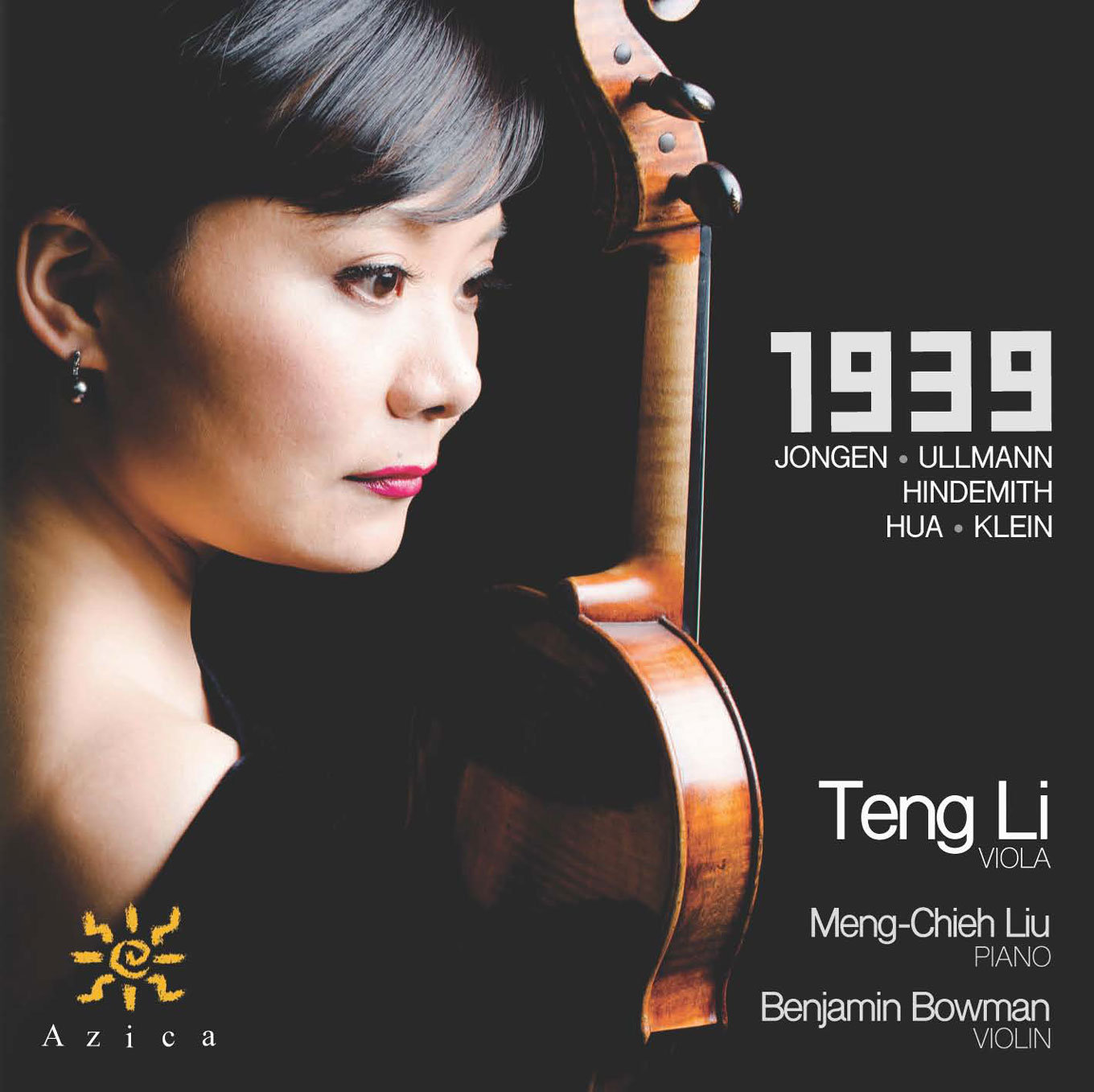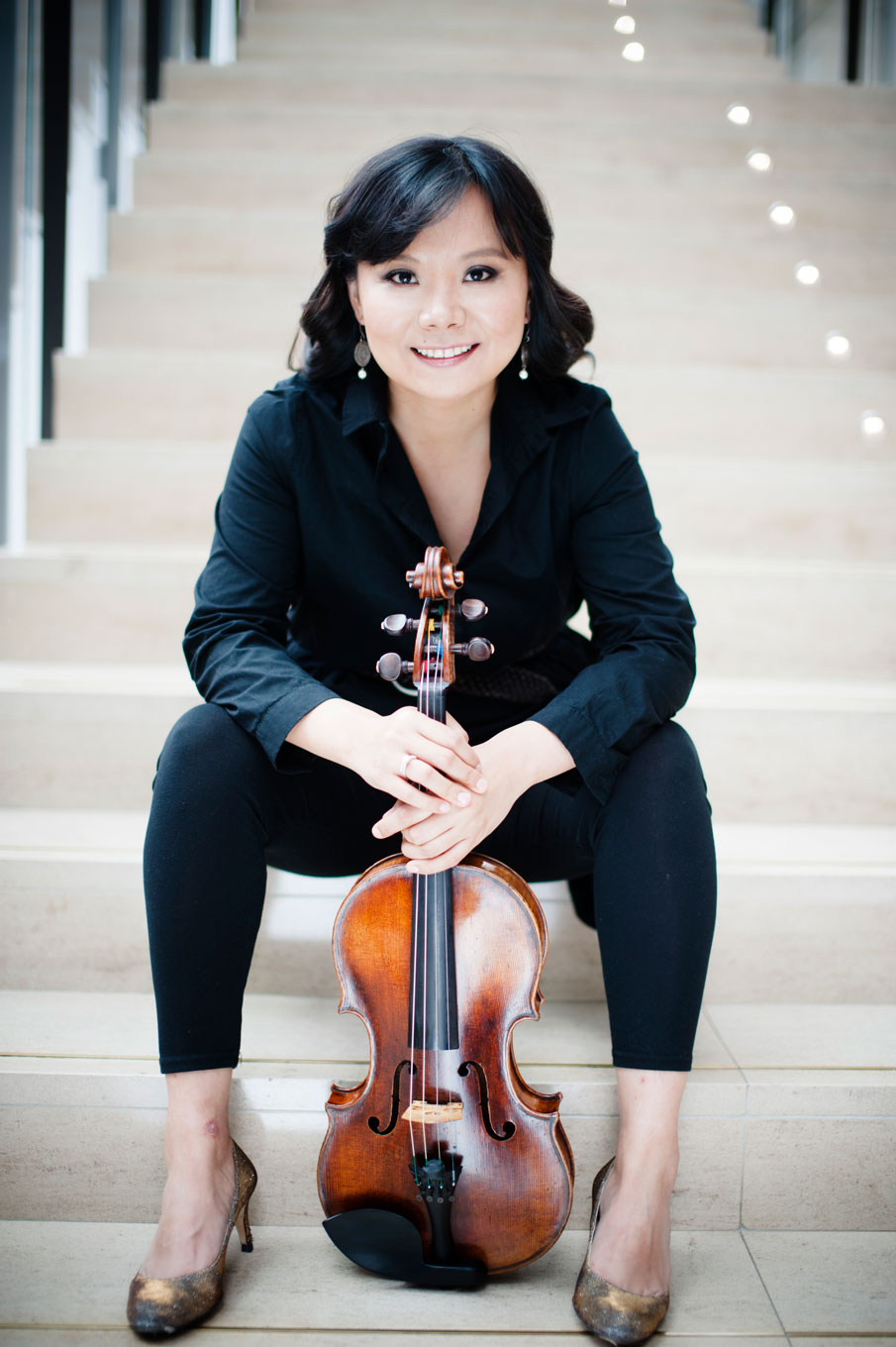
Artists to watch: Teng Li
InterviewToronto-based violist Teng Li is one of those exhaustively creative musicians. She is the Principal Violist for the Toronto Symphony Orchestra, the Artistic Director of the Morningside Music Bridge training program, and an active chamber musician whose latest album, 1939, comes with “…a sparkling freshness you usually hear in your dreams.” (David Patrick Stearns, Philadelphia Inquirer)
On November 9 and 11 at Roy Thomson Hall, Li performs Willam Walton’s Viola Concerto as part of the TSO’s ongoing Decades Project: 1920-1929. Later this month, Li and her newly-formed Rosamunde Quartet (with violinists Noah Bendix Balgley and Shanshan Yao, and cellist Nathan Vickery) play at the University of Toronto for their Walter Hall Series, November 28 at 7:30pm.
We spoke with Li about the facets of her work as a violist, from training young musicians to performing with world-class orchestras and chamber ensembles.
What do you find is special about the Walton Viola Concerto? What do you hope to say with the piece?
The Walton Concerto has become one of the most standard repertoires in viola literature. In the baroque, classical, and romantic period, the viola has typically been neglected as a solo instrument, it probably had something to do with the low standard of viola playing. In the 20th century, many fantastic violists started rising, performing as chamber musicians and soloists. Thanks to them, many composers started writing for the viola; Walton’s Viola Concerto was one of these works (premiered in 1929). It showcases the viola’s dark and warm characters, and allows the performers to showcase their lyrical singing voice and virtuosity using lots of difficult double-stop passages and fast playing. Walton also shows influences of jazz and some eastern music in this work.
One of the many things I love about this work is the fact that it was premiered by Paul Hindemith (1895 - 1963) and that the work played a role in bringing together the duo in friendship. Hindemith, one of the most influential German composers and educators of the 20th century, is someone I admire very much - actually I recently recorded his Viola Sonata on my Azica Records’ disc, 1939. Knowing the friendship that blossomed from the collaboration is significant to me somehow.

Can you tell us about Morningside Music Bridge, and its mission?
Morningside Music Bridge is an international training program for young musicians with extraordinary talent. The faculty is world-class and offers young musicians a nurturing environment, varied performance opportunities, and provides the students with a platform for culture exchange at a critical time for these young musicians, at the beginning of their professional journey.
When did you join the Toronto Symphony, and what did that mean for you?
I joined the TSO as principal violist when I was 21. I was still in school at the Curtis Institute of Music at the time. I didn’t have a lot of orchestral experience previously, and I remember learning a lot of orchestral repertoire for my job at TSO. Getting to know everyone orchestra is a lot of fun, especially when there are so many big personalities!
I also remember commuting between Philadelphia and Toronto for lessons, classes, and concerts. It was amazing to have a job in a leading orchestra and to live in an amazing city, although I was on the road too much to really appreciate the city of Toronto.
How does an instrumentalist with an orchestral position also set themselves apart as a soloist?
I think it’s really like anything else, working hard and finding opportunity. I have been lucky throughout my career to have the opportunities I’ve had. Additionally, the TSO is very proud of their players and offer principal players solo opportunities.

Can you describe the difference for you between playing in an orchestra or chamber ensemble, versus performing as a soloist in a concerto?
Performing as a soloist is very different than a member of the orchestra. I find both roles exciting in their own way. As a soloist, I have more license to share my independent voice and vision for the piece. As principal violist in the orchestra, I get to support the vision of the conductor by leading my section to perform as one voice. I feel lucky to have the opportunity to wear different hats in my career, as a soloist, chamber musician and as an orchestral musician.


Comments